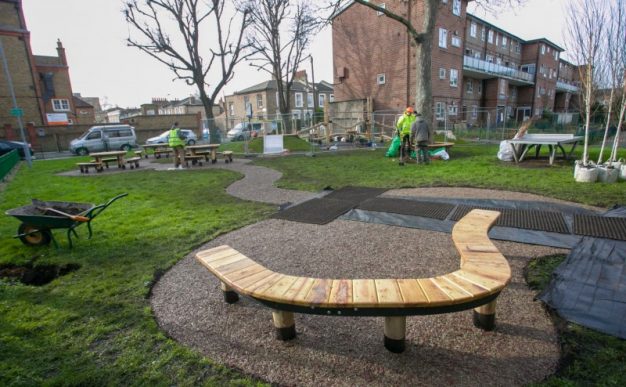
Hackney asks: how can we become a ‘child-friendly borough’?
One of London’s most densely-populated boroughs is asking residents how it can best incorporate a set of child-friendly principles into its future development.
Hackney Council, in the east of the city, has proposed eight specific fundamentals designed to give children and young people a much stronger voice on changes to their neighbourhoods, while firmly eschewing notions of ‘social exclusivity’.
There is also a much stronger focus on the health and well being of young people, achieved through more contact with the natural surroundings and ‘de-prioritising’ space on the roads for private vehicles. Hackney has a population of over 280,000 – more than many cities – but it remains among the 10 per cent most deprived in the country, with nearly half of its children living in low-income households.
Maximising opportunities for safe play
Local councillor Caroline Woodley is the London Borough of Hackney’s Cabinet Member for Families, Early Years and Play, and she said the new initiative contributed to Hackney’s commitment to become a child-friendly borough by maximising opportunities for safe play and outdoor activities.
“Planning for a child-friendly built environment is a set of ideas concerned with shaping the physical features of neighbourhoods and cities, ensuring young people have an opportunity to become more active and visible in the daily life of parks and squares,” said Woodley.

“This aims to expand children’s opportunities to have their views and experiences taken seriously by the development industry, and to sit alongside those involved in decision-making. Child-friendly design and planning needs to be considered at a strategic level at the start of any development process.
‘Streets reclaimed by children’
“The eight child-friendly principles for Hackney are all elements we’ve seen led and enacted by children in the first wave of the pandemic, as we saw our streets reopen and be reclaimed by children.”
The eight principles being put to the public are:
- Shaping my borough: to ensure children and young people in Hackney have the power to influence change in their Borough
- Doorstep play: to provide the opportunity for play and social interactions immediately outside the front door
- Play on the way: to provide opportunities for informal play, things to do and see around the neighbourhood beyond designated parks and playgrounds
- People before cars: to ensure that children, young people and their carers can move through Hackney safely by walking, cycling or public transport
- Contact with nature: to build in opportunities for everyday access to and connections with nature
- Places for all: to design socially inclusive and culturally sensitive places that are accessible and safe for all children and young people to enjoy together
- Making spaces children and young people want to be: to ensure open spaces are designed to be vibrant, active and safe environments where children and young people want to be
- Health and wellbeing: to ensure design of outdoor environments contribute towards healthier foodscapes, reduced exposure to pollution and improved physical and mental wellbeing.
These were designed through workshops with the Hackney Youth Parliament, with the session aimed to equip the borough’s youth with confidence to recognise child-friendly design principles, in an attempt to make the young more central to policy making in the future.
In 2018 the borough was represented at the Child in the City World Conference in Vienna. Nicola Butler, Director of Hackney Play Association in London. Even then, her presentation gave an insight on how the borough of Hackney had continued to support the child’s ‘right to play’ under the shadow of a national austerity drive and local budget cuts, and how it would preserve these principles going forward.
Fast forward two years and these latest plans, if adopted by the council, would expect residential buildings to have playable space directly outside main entrances, for shared outdoor space in residential schemes to be accessible to children of all housing tenures.
Acoustics of play spaces
The acoustics of play spaces would also be expected to be “adequately considered” at a design’s early stages, in order that children could play without disturbing others, and physical barriers seeking to divide outdoor space between different types of housing would be avoided.
Hackney is also currently creating 40 new ‘School Streets‘, helping over 14,000 children walk and cycle to school.
Click here for the Growing Up in Hackney Child Friendly Places Supplementary Planning Document.
Click here for more on the Child Friendly Places consultation process.




